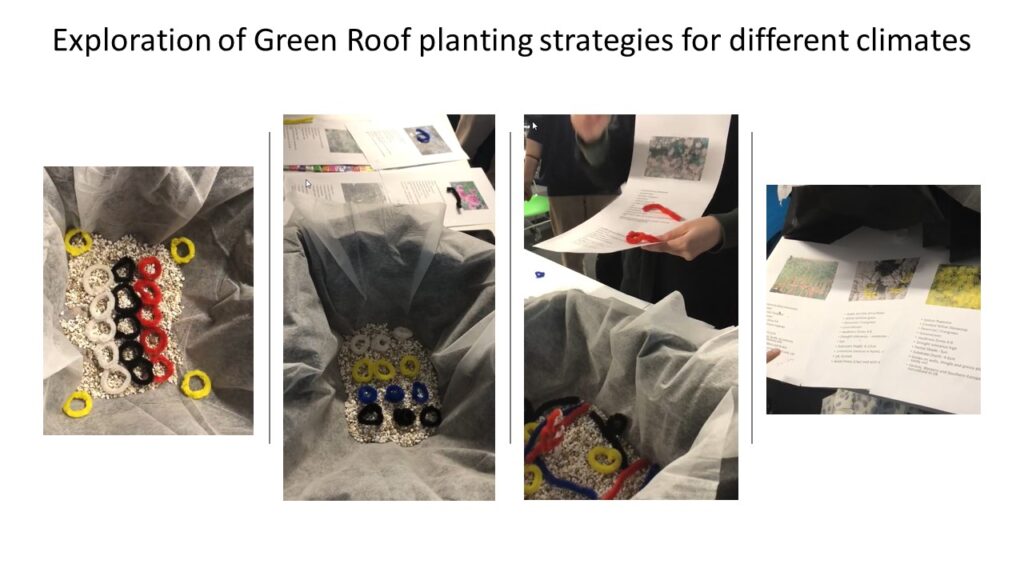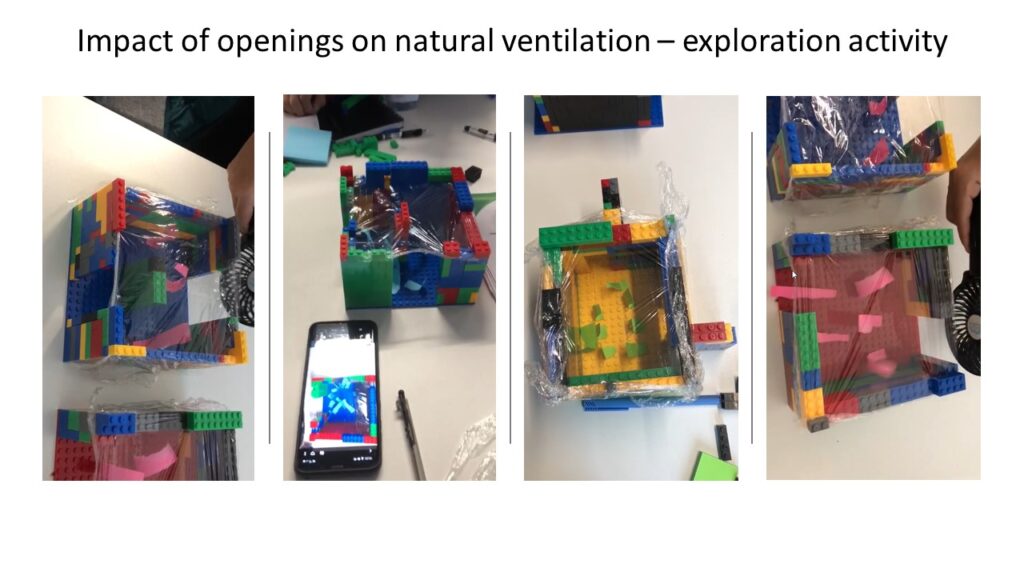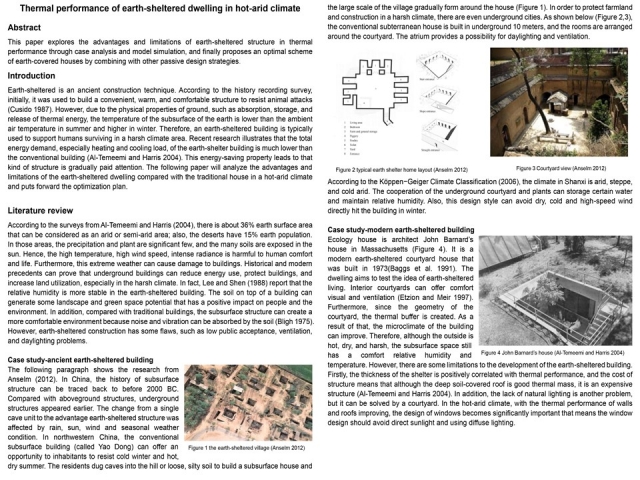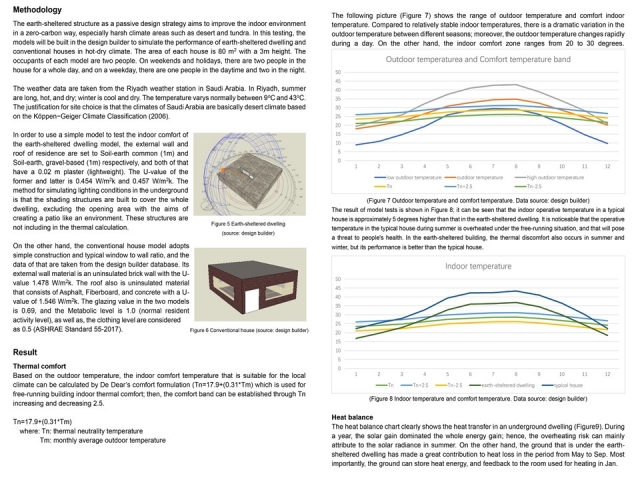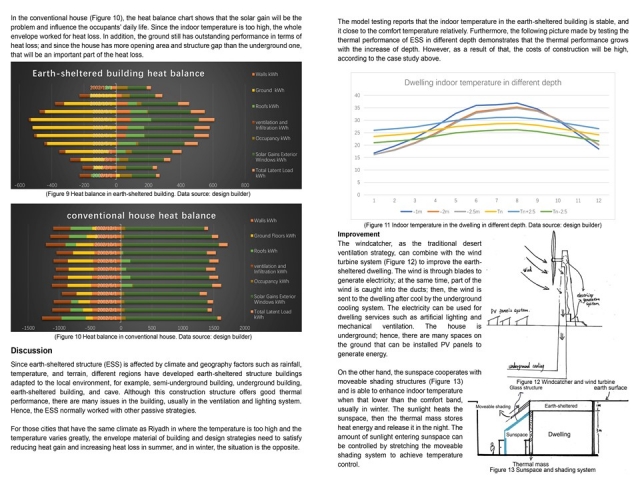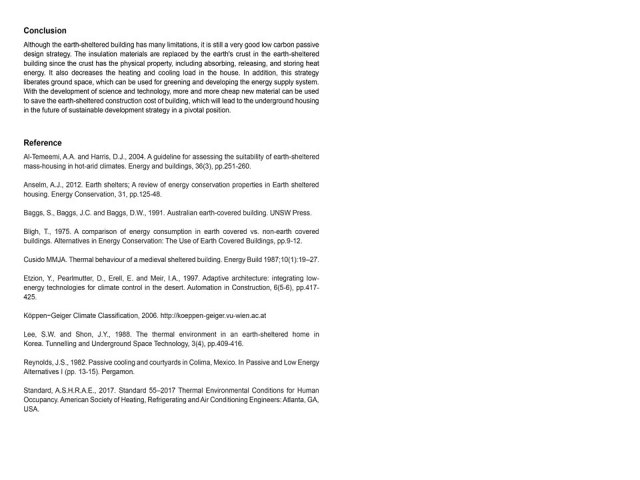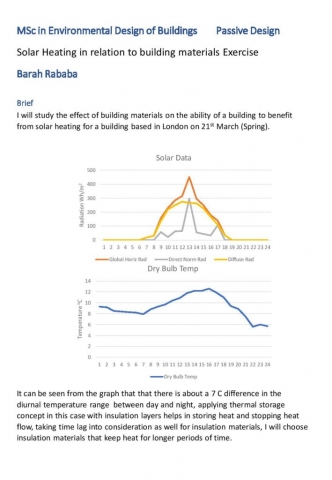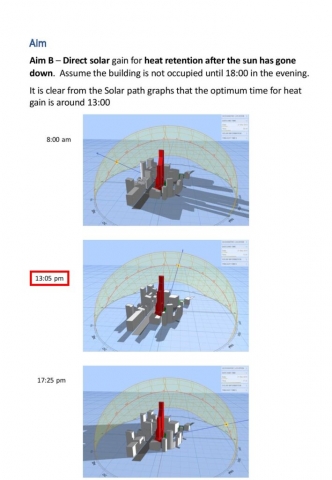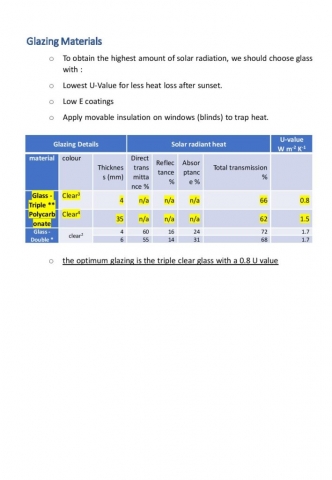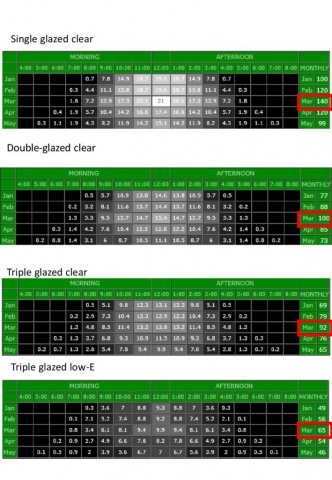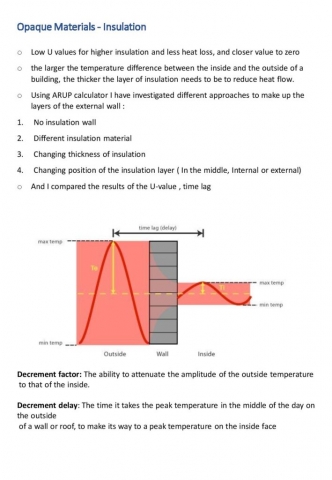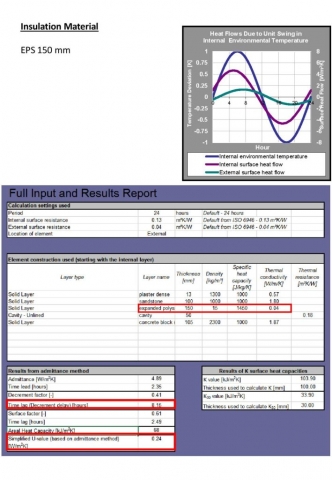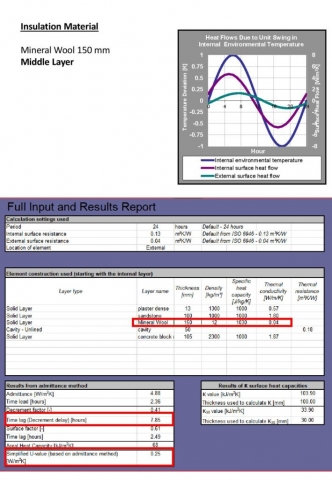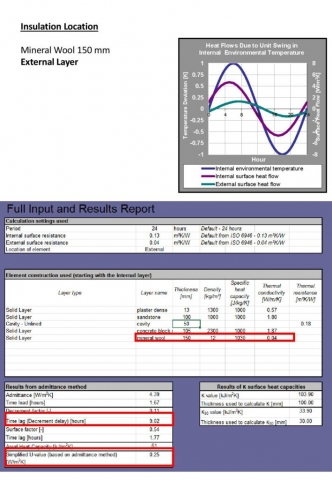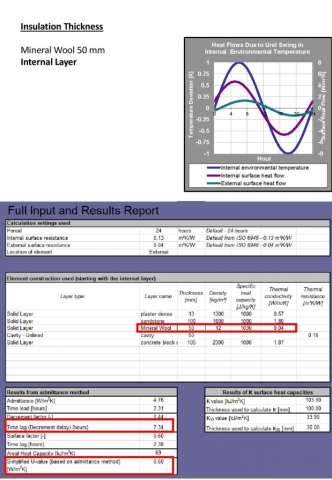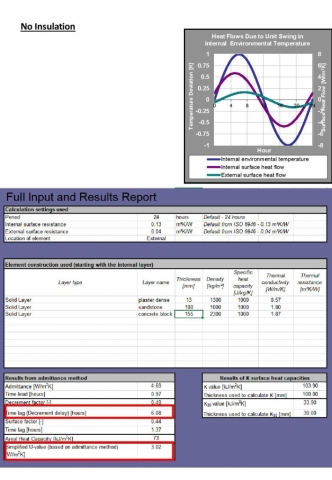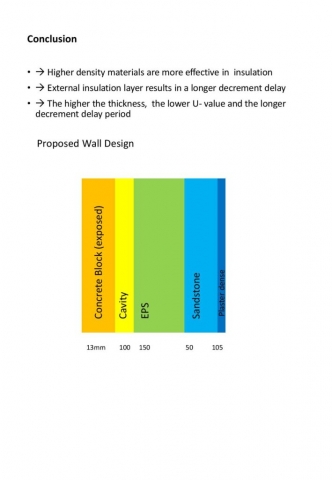Passive design is an approach to environmental design in which emphasis is given to the building envelope and other parts of the building fabric in modifying the climate; making use of ambient energy to get as close to comfort as possible without use of mechanical building services. This approach recognises that the form and fabric of a building have an effect on the environment experienced inside that building and aims to make it acceptable for as long a period in the year as possible. This module considers the principles of passive design as revealed by a number of basic strategies for lighting, heating and cooling buildings.
Kaiwen Li – Earth sheltered dwelling in hot-arid climate
“Passive design course is my favorite one. During the course, I learned how to look at the relationship between environment and architecture critically. Passive design is not a new major. Many ancient buildings have already used passive design strategies. In the course, I learned how to form a logic that matches passive design elements to different climates and client needs. This method of training will be of great help in my future career. Passive design is an interesting and challenging course, but it is also the one I have learned the most. If there is a chance, I hope to study this field in the future.”
Kaiwen Li
Xue Yang – Trombe wall in warm-temperate climate
Xue-Yang-PDZirui Wang – Indirect evaporative cooling in hot humid climate
Zirui_Wang-Evaporative_coolingMaithilee Shetty – Fixed external shading devices
PD-Maithilee-ShettyBarah Rababa – Green Roofs on Container Shelters in Hot Arid Climates (Jordan)
PD-FinalTeaching activities
